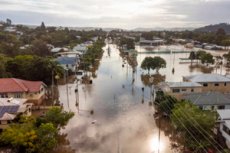
17 May 2024, 20:35
ITC 教职科学家在《国际卫生地理学杂志》上发表的一项最新研究发现,洪水导致钩端螺旋体病病例增加。
第一作者John Ifejube是空间工程硕士项目的应届毕业生。本论文是他地理健康硕士论文的直接成果。
洪水是一种与气候相关的灾害,不仅影响环境,也影响人类福祉。钩端螺旋体病是由钩端螺旋体细菌引起的血液感染。人们通过接触受污染的水或尿液而感染。
感染者可能会出现头痛、肌肉疼痛和发烧,严重者甚至可能导致肾衰竭。越来越多的研究将钩端螺旋体病的传播与洪水联系起来,但迄今为止,这方面尚未得到深入研究。
硕士论文 Ifejube 的硕士论文研究了印度喀拉拉邦钩端螺旋体病发病率与反复洪水之间的关系。他发现洪水会导致钩端螺旋体病病例增加。他的研究表明,洪水持续时间是预测感染人数最重要的洪水特征。根据他的研究,严重洪水比中等强度洪水导致更多的钩端螺旋体病病例。
他比较了三个不同年份的钩端螺旋体病病例,跨越了时间和空间。具体来说,他比较了2018年和2019年(当时分别发生了严重和中度洪灾)的病例数,以及2017年(当时没有洪灾)的病例数。
对于每个洪水年份,他都会查看洪水发生前三个月、洪水期间和洪水发生后三个月的报告病例。为了评估洪水的严重程度,他使用高分辨率卫星图像识别了每次洪水的受灾人口。最后,他使用空间回归分析了洪水后钩端螺旋体病病例与洪水强度之间的关系。

